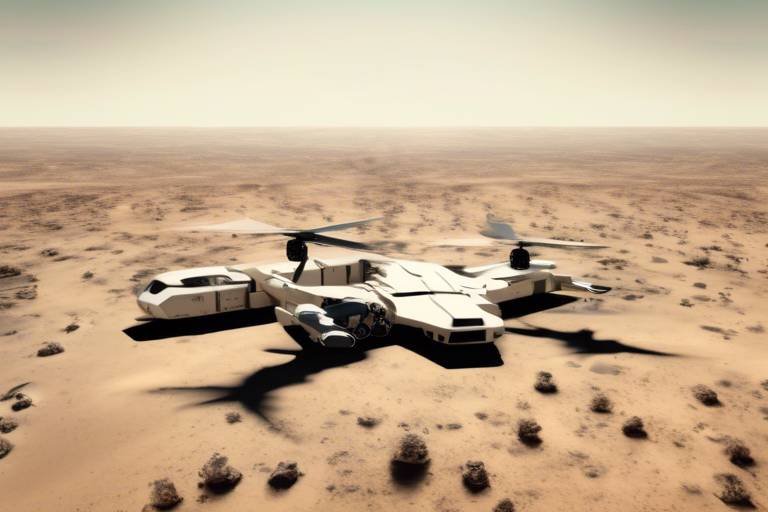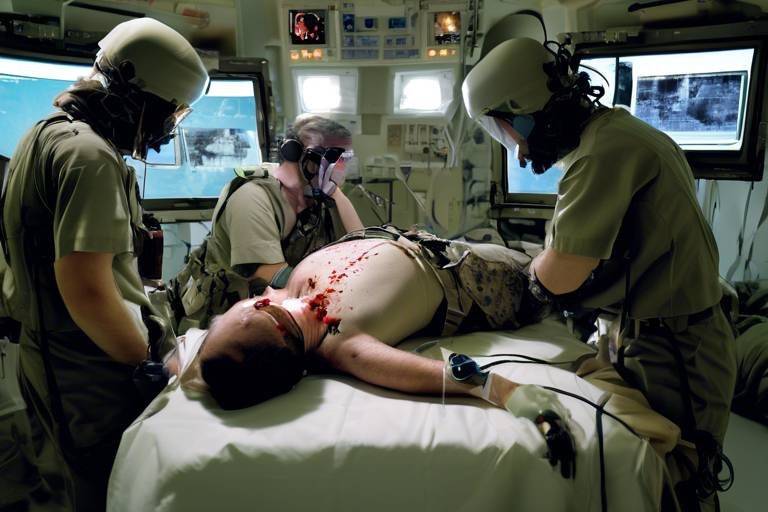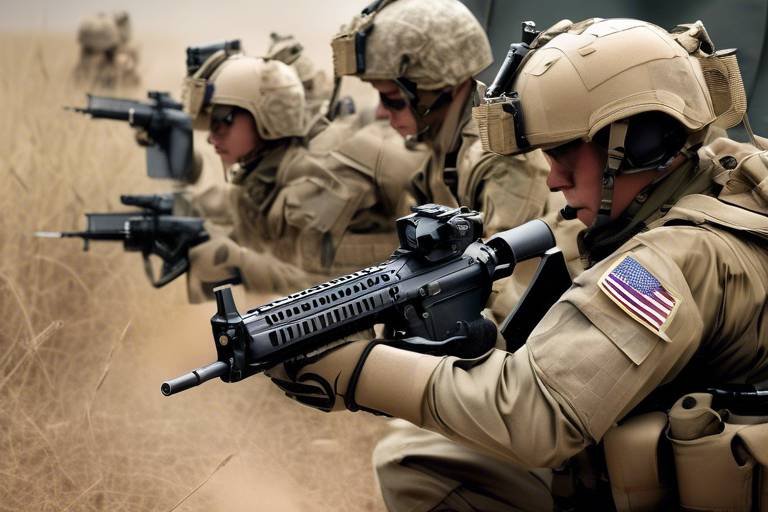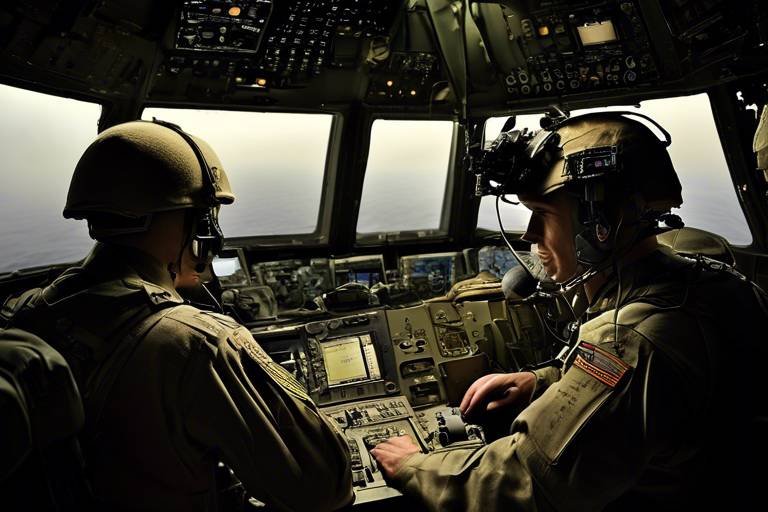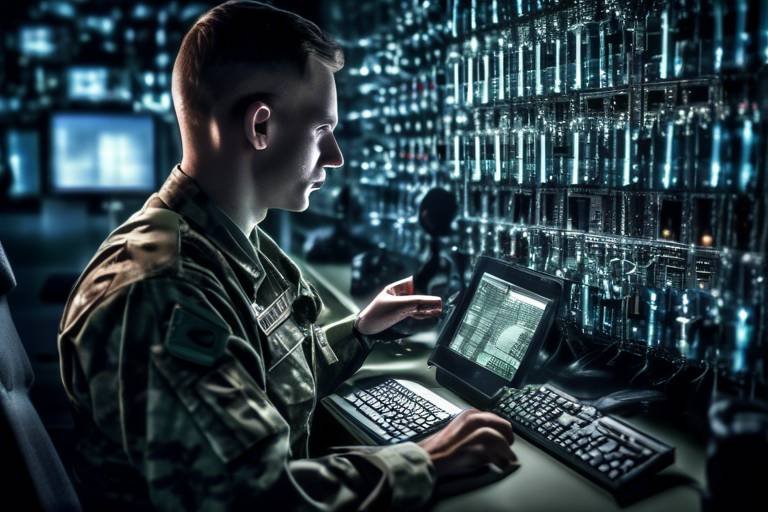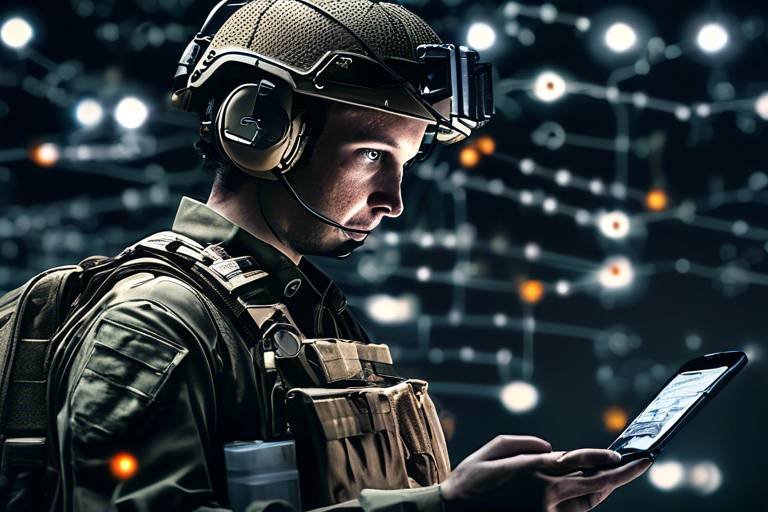Exploring Quantum Radars in Future Battlefield Environments
In an era where technology is advancing at an unprecedented pace, quantum radars are emerging as a game-changing innovation in military applications. These advanced systems promise to redefine the landscape of warfare, enabling forces to detect and track targets with remarkable precision and reliability. Imagine a battlefield where stealth technologies, which once offered a significant tactical advantage, become nearly obsolete. This is the potential of quantum radar technology, and it's not just a distant dream—it's on the horizon. As we dive deeper into this topic, we'll explore how quantum mechanics enhances radar systems, the advantages they bring, and the challenges that lie ahead.
To appreciate the significance of quantum radars, it's essential to grasp the fundamental principles behind them. Traditional radar systems operate on the principles of electromagnetic waves, bouncing signals off objects to determine their location. However, quantum radars leverage quantum mechanics, utilizing the unique properties of quantum states to improve detection capabilities. By employing entangled photons and quantum superposition, these radars can detect objects that are typically difficult to identify, such as stealth aircraft or small drones. This leap in technology not only enhances detection but also reduces the chances of false positives, making military operations more efficient and effective.
So, what makes quantum radars stand out from their conventional counterparts? The advantages are numerous and profound. Firstly, quantum radars are capable of detecting stealth objects that traditional systems struggle to identify. This capability stems from their unique detection methods, which involve analyzing the quantum states of reflected signals. Additionally, quantum radars exhibit a remarkable resilience against jamming, a common tactic used by adversaries to disrupt radar operations. This resilience ensures that military forces can maintain operational integrity even in hostile environments, ultimately providing a strategic advantage on the battlefield.
The ability of quantum radars to detect low-observable targets is nothing short of revolutionary. Unlike conventional radar systems that rely on the size and shape of objects, quantum radars can pick up on subtle changes in quantum states, allowing them to identify stealth technologies that would otherwise remain hidden. This capability is particularly crucial in modern warfare, where the element of surprise and stealth can dictate the outcome of engagements. With quantum radars, military forces can regain the upper hand against adversaries who rely on stealth technology to evade detection.
Stealth technology has significantly altered military aviation, enabling aircraft to evade detection through various means, such as shaping and radar-absorbing materials. However, quantum radars have the potential to counter these advancements effectively. By utilizing quantum entanglement and advanced signal processing techniques, quantum radars can detect even the most sophisticated stealth aircraft. This capability could shift the balance of power in aerial combat, allowing forces equipped with quantum radar systems to maintain situational awareness and make informed tactical decisions.
Jamming has long been a tactic employed by militaries to disrupt radar systems and communication lines. Traditional radar systems often fall victim to this strategy, leading to compromised operations and decreased effectiveness. However, quantum radars are designed to operate effectively in jamming environments. Their ability to distinguish between genuine signals and jamming attempts enables them to maintain operational integrity. This ensures that military forces can continue to gather critical intelligence and coordinate operations, even when faced with electronic warfare tactics.
Quantum radars are not just theoretical concepts; they have practical applications that can enhance various military operations. From reconnaissance missions to real-time surveillance and targeting, the integration of quantum radar technology can reshape military strategy. Imagine a scenario where reconnaissance units can detect enemy movements without being detected themselves or where targeting systems can accurately identify threats in complex environments. The implications are vast, and as quantum radar technology continues to evolve, its applications in military operations will only expand.
Despite the immense potential of quantum radars, several challenges must be addressed before widespread adoption can occur. Technical limitations, such as the need for advanced materials and precise calibration, pose significant hurdles for researchers and developers. Moreover, the high costs associated with developing and deploying quantum radar systems can be prohibitive for many military organizations. As we explore these challenges, it's crucial to consider the path forward for integrating quantum radar technology into modern military frameworks.
Current technological limitations present significant hurdles for the development of practical and efficient quantum radar systems. Research is ongoing to overcome issues related to signal processing, environmental interference, and the scalability of quantum technologies. Additionally, the transition from laboratory prototypes to field-ready systems requires substantial innovation and investment. As researchers work to address these challenges, the future of quantum radar technology remains promising.
Implementing quantum radar technology comes with considerable financial implications. The development of these advanced systems requires significant investment in research, development, and production. Military organizations must evaluate resource allocation carefully to ensure that the benefits of quantum radars justify the costs. As the technology matures, economies of scale may help reduce costs, making it more accessible for various military applications.
Looking ahead, quantum radars are poised to revolutionize warfare in ways we are only beginning to understand. As advancements in quantum technology continue to unfold, we can expect to see even more sophisticated radar systems that enhance military capabilities and operational effectiveness. The potential impact on military strategies and international security dynamics is profound, as nations race to adopt cutting-edge technologies that could redefine the balance of power. The future of warfare may very well hinge on the successful integration of quantum radars into military frameworks.
- What are quantum radars? Quantum radars are advanced radar systems that utilize principles of quantum mechanics to enhance detection capabilities, particularly for stealth objects.
- How do quantum radars improve detection? They use entangled photons and quantum states to detect low-observable targets, providing superior accuracy compared to traditional radar systems.
- Are quantum radars resistant to jamming? Yes, quantum radars maintain operational integrity even in jamming environments, ensuring reliable surveillance and communication.
- What challenges do quantum radars face? Technical limitations and high development costs are significant barriers to the widespread adoption of quantum radar technology.
- What is the future of quantum radars in warfare? Quantum radars are expected to revolutionize military operations, enhancing reconnaissance, targeting, and overall strategic effectiveness.

The Basics of Quantum Radar Technology
Understanding the fundamental principles of quantum radar technology is crucial for grasping its potential implications in modern warfare. At its core, quantum radar leverages the principles of quantum mechanics to enhance traditional radar systems. Unlike conventional radar, which relies on electromagnetic waves to detect objects, quantum radars utilize the unique characteristics of quantum states, such as superposition and entanglement, to improve detection capabilities.
In simple terms, think of quantum radar as the next generation of radar technology, akin to upgrading from a flip phone to a smartphone. While traditional radars send out signals and wait for echoes to determine the presence of objects, quantum radars can manipulate particles in a way that allows them to detect even the most elusive targets. This means they can spot stealth aircraft or submarines that would normally go undetected by standard systems.
One of the most exciting aspects of quantum radar technology is its ability to operate with greater precision and reduced interference. For instance, when a quantum radar sends out a signal, it can do so in a way that minimizes the chances of being jammed or deceived by countermeasures. This resilience is a game-changer in the battlefield, where every second counts and the ability to maintain situational awareness can mean the difference between victory and defeat.
Moreover, the use of quantum entanglement allows these systems to share information in real-time, providing a networked approach to surveillance. Imagine a scenario where multiple radar units are working together, each one enhancing the other's ability to detect threats. This collaborative framework not only boosts detection rates but also creates a more comprehensive picture of the battlefield.
To illustrate the differences between traditional and quantum radar systems, consider the following table:
| Feature | Traditional Radar | Quantum Radar |
|---|---|---|
| Detection Method | Electromagnetic waves | Quantum states manipulation |
| Stealth Detection | Limited | Enhanced |
| Resistance to Jamming | Vulnerable | Highly resilient |
| Information Sharing | Sequential | Real-time collaborative |
In conclusion, the basics of quantum radar technology reveal a system that is not only more advanced but also fundamentally different from what we currently rely on. As we continue to explore its potential, it's clear that quantum radar could reshape the landscape of military strategy, providing nations with unprecedented capabilities in detection and response. The future of warfare may very well hinge on the successful integration of this groundbreaking technology.
- What is quantum radar technology? Quantum radar technology utilizes principles of quantum mechanics to enhance detection capabilities beyond traditional radar systems.
- How does quantum radar improve stealth detection? Quantum radars can detect low-observable targets by manipulating quantum states, allowing them to spot objects that conventional systems would miss.
- Can quantum radars resist jamming? Yes, quantum radars are designed to be highly resilient against jamming tactics, maintaining operational integrity in challenging environments.
- What are the future implications of quantum radar in warfare? The integration of quantum radar technology could revolutionize military strategies, enhancing reconnaissance, surveillance, and targeting capabilities.
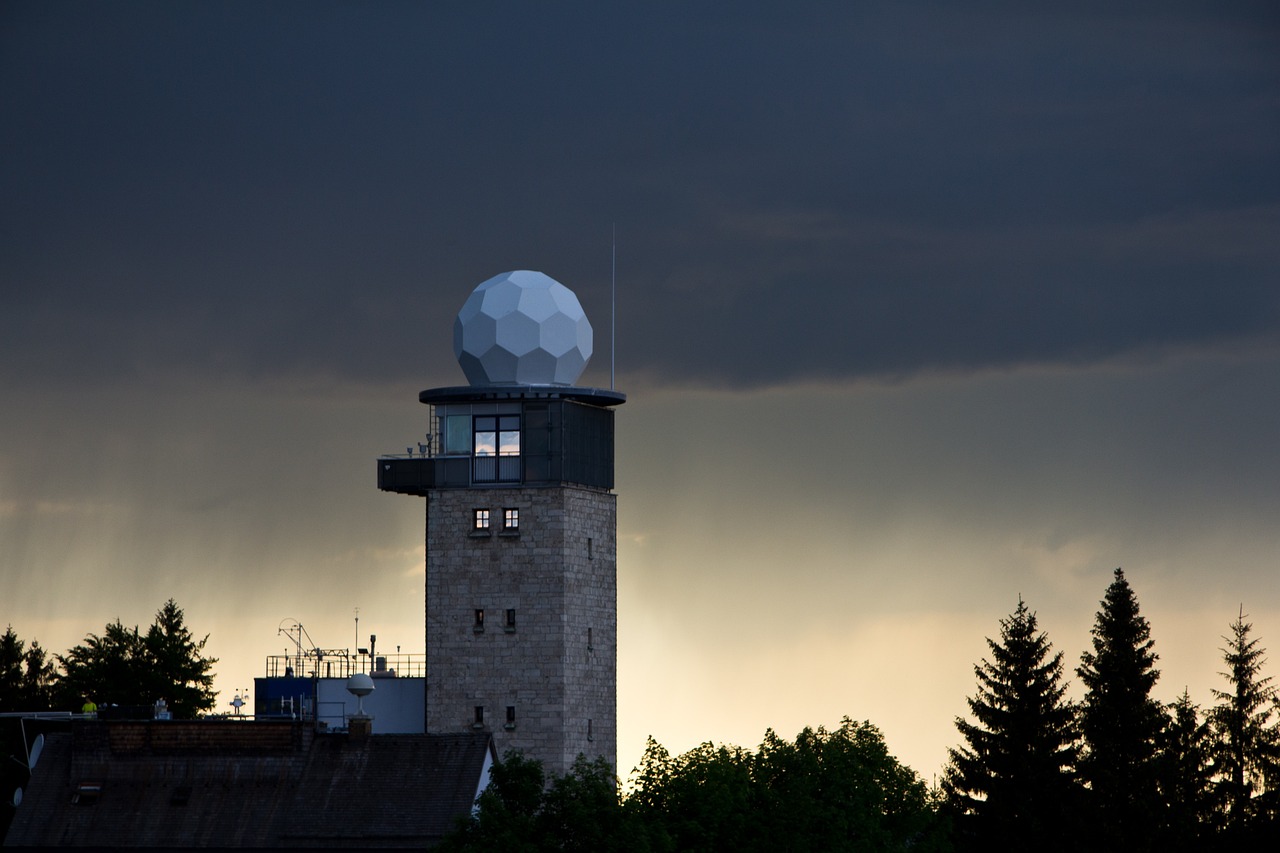
Advantages of Quantum Radars
The advent of quantum radars marks a significant leap in radar technology, bringing with it a host of advantages that traditional systems simply cannot match. Imagine trying to find a needle in a haystack; traditional radars often struggle with this task, especially when the needle is cleverly disguised. Quantum radars, however, operate on the principles of quantum mechanics, allowing them to detect stealth objects with astonishing precision. This enhanced capability is not merely an incremental improvement; it's a fundamental shift in how we can perceive and interact with our environment on the battlefield.
One of the standout features of quantum radars is their superior ability to detect low-observable targets. These are the objects designed specifically to evade detection, such as stealth aircraft and drones. With conventional radar systems, these targets can slip through the cracks, much like a shadow in the night. Quantum radars, on the other hand, leverage the unique properties of quantum entanglement and superposition to enhance their detection capabilities. This means that even the most elusive targets can be identified, providing military forces with a strategic advantage that was previously thought impossible.
So, how do quantum radars achieve this remarkable feat? The secret lies in their ability to utilize quantum signals that are less susceptible to interference and noise. By harnessing the power of quantum states, these radars can differentiate between genuine signals and background noise, effectively filtering out the clutter that often complicates traditional radar systems. This results in a clearer picture of the battlefield, allowing for more informed decision-making and tactical planning.
Stealth technology has revolutionized military aviation, enabling aircraft to evade detection and strike with precision. However, quantum radars are poised to turn the tables on stealth capabilities. By exploiting the quantum properties of light and matter, these radars can detect the faintest signatures emitted by stealth aircraft, rendering them vulnerable. This could fundamentally alter aerial combat dynamics, as military planners will no longer have to rely solely on conventional detection methods that can be easily outsmarted by stealth technology.
In the realm of electronic warfare, jamming has long been a favored tactic to disrupt radar systems. Traditional radars can become blind in the face of jamming, akin to a ship lost in a fog. Quantum radars, however, showcase remarkable resilience against such tactics. Their operational integrity remains intact even in jamming environments, ensuring that military forces can maintain reliable communication and surveillance. This resilience not only enhances situational awareness but also contributes to a more robust defense strategy.
To summarize, the advantages of quantum radars are not just theoretical; they represent a transformative shift in military capabilities. With enhanced detection capabilities, effective countermeasures against stealth technologies, and resistance to jamming, quantum radars are set to redefine the rules of engagement on the battlefield. As we continue to explore this groundbreaking technology, the implications for military strategy and international security are profound.
- What are quantum radars? Quantum radars are advanced radar systems that utilize principles of quantum mechanics to enhance detection capabilities, particularly in identifying stealth objects.
- How do quantum radars differ from traditional radars? Unlike traditional radars, which can struggle with detecting low-observable targets, quantum radars leverage quantum properties to achieve superior detection and resilience against jamming.
- What impact will quantum radars have on military strategy? Quantum radars are likely to revolutionize military strategy by providing enhanced situational awareness and making stealth technologies less effective.
- Are there any challenges in implementing quantum radar technology? Yes, challenges include technical limitations, high development costs, and the need for specialized resources.

Enhanced Detection Capabilities
The realm of military technology has always been a battleground for innovation, and quantum radars are at the forefront of this evolution. One of the most groundbreaking aspects of quantum radar technology is its . Unlike traditional radar systems that rely on classical physics, quantum radars leverage the principles of quantum mechanics to detect objects with remarkable precision. This advancement opens up possibilities that were once considered science fiction.
Imagine a world where stealth aircraft, designed to evade detection, can be spotted with ease. Quantum radars utilize quantum entanglement and superposition to achieve this feat. By sending out quantum signals that can interact with the target in unique ways, these radars can pick up on subtle changes in the environment that traditional systems might miss. For instance, when a stealth aircraft tries to mask its signature, quantum radars can still detect the minute disturbances it creates in the surrounding air.
To illustrate this point, consider the following comparison between conventional and quantum radar systems:
| Feature | Conventional Radar | Quantum Radar |
|---|---|---|
| Detection of Stealth Objects | Limited effectiveness | Highly effective |
| Signal Interference | Susceptible to jamming | Resilient to jamming |
| Range and Accuracy | Standard range | Extended range with high accuracy |
As seen in the table, the ability of quantum radars to detect stealth objects is a game-changer. The technology's reliance on the quantum properties of light enables it to identify targets that would otherwise remain undetectable. This capability is particularly crucial in modern warfare, where stealth technology has become a significant advantage for many military forces.
Moreover, the operational principles of quantum radars allow for a broader range of detection. They can identify not just aircraft but also missiles, drones, and other low-observable targets. This all-encompassing detection capability ensures that military forces can maintain situational awareness and respond effectively to threats, thereby enhancing overall battlefield effectiveness.
In summary, the enhanced detection capabilities of quantum radars represent a significant leap forward in military technology. By harnessing the power of quantum mechanics, these systems not only improve the detection of stealth objects but also provide a strategic advantage in various military operations. As we move forward, the integration of quantum radar technology into military arsenals will likely redefine the rules of engagement and the very nature of warfare.
- What is quantum radar technology? Quantum radar technology utilizes the principles of quantum mechanics to improve detection capabilities, particularly for stealth objects.
- How does quantum radar differ from conventional radar? Unlike conventional radar, which relies on classical physics, quantum radar can detect low-observable targets and is more resilient to jamming.
- What are the potential military applications of quantum radars? Quantum radars can enhance reconnaissance, surveillance, and targeting, significantly impacting military strategies.
- Are there challenges in implementing quantum radars? Yes, there are technical, operational, and financial challenges that need to be addressed for successful implementation.
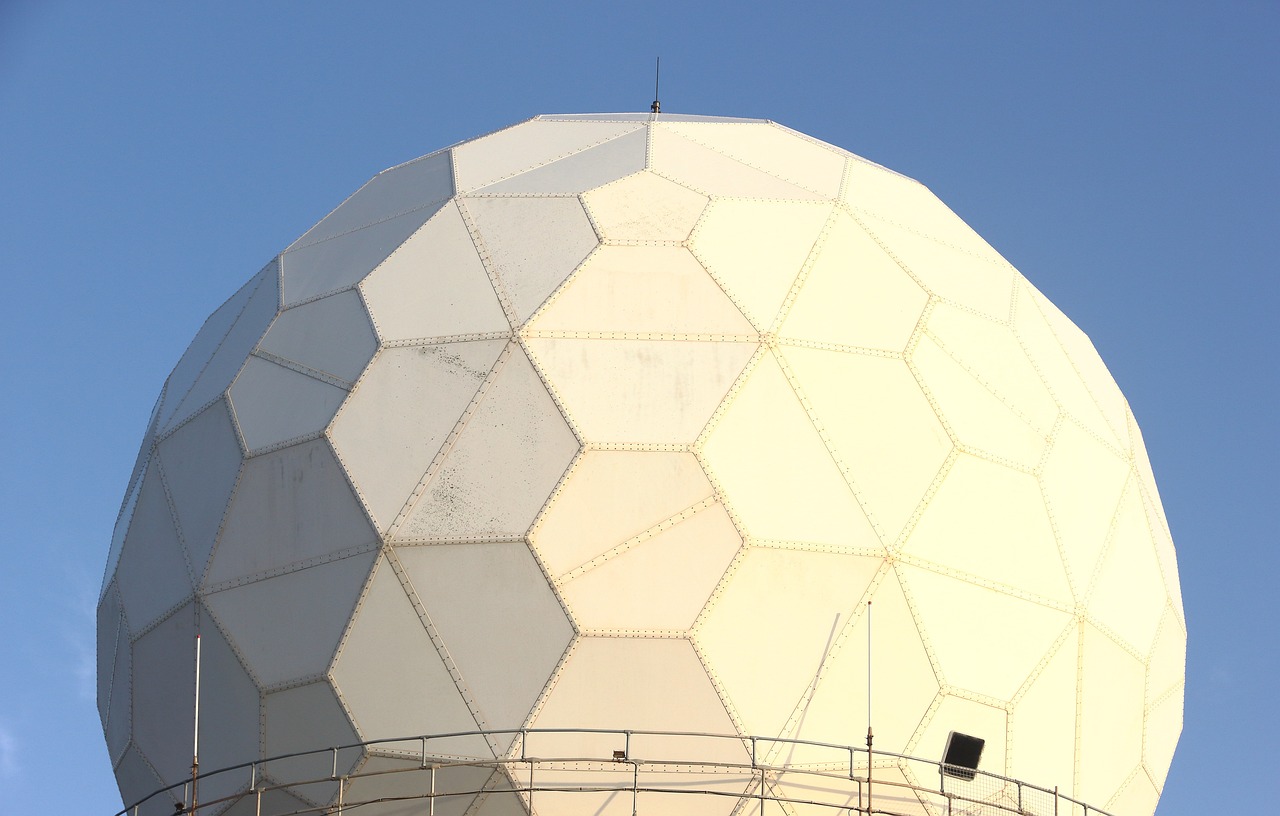
Stealth Technology Countermeasures
The evolution of stealth technology has dramatically changed the landscape of aerial warfare. For decades, military forces have invested heavily in developing aircraft and systems designed to evade detection by conventional radar. However, the introduction of quantum radars presents a formidable challenge to these stealth capabilities. So, how do quantum radars manage to detect what was once invisible? It's all about harnessing the unique properties of quantum mechanics.
At the heart of quantum radars lies the ability to exploit the quantum nature of light. Traditional radar systems rely on microwaves to bounce signals off objects, but stealth technology is designed to minimize this radar cross-section, making it difficult for conventional systems to pick up the target. In contrast, quantum radars use entangled photons, which can reveal the presence of stealth aircraft by detecting the subtle changes in the quantum state of these photons as they interact with the target. This phenomenon allows quantum radars to effectively "see" through the cloaking mechanisms employed by stealth technology.
One of the most intriguing aspects of quantum radar technology is its resilience against the tricks employed by stealth aircraft. While traditional systems might struggle against advanced materials that absorb or deflect radar waves, quantum radars can utilize quantum interference effects to enhance their detection capabilities. This means that even the most advanced stealth aircraft, designed to evade conventional systems, may find themselves within the sights of a quantum radar, fundamentally shifting the balance of power in aerial combat.
Moreover, the integration of quantum radars into military operations could lead to a strategic revolution. Consider the implications of a battlefield where stealth aircraft, once deemed nearly invulnerable, can be detected and targeted with precision. This could render current stealth technologies obsolete, forcing military strategists to rethink their approaches to aerial combat. The potential for quantum radars to detect low-observable targets could lead to a new arms race, where nations invest heavily in countermeasures against these advanced detection systems.
In summary, quantum radars represent a significant leap forward in countering stealth technology. By leveraging the principles of quantum mechanics, these systems can detect and track stealth aircraft in ways that traditional radar could only dream of. As militaries around the world begin to understand and adopt this technology, we may witness a dramatic reshaping of aerial warfare dynamics, where the once-dominant stealth capabilities are challenged by the innovative power of quantum detection.
- What is quantum radar? Quantum radar is an advanced radar technology that uses the principles of quantum mechanics to detect objects, including those designed to evade detection.
- How does quantum radar differ from traditional radar? Unlike traditional radar, which relies on microwaves, quantum radar uses entangled photons, allowing it to detect stealth technology more effectively.
- Can quantum radars detect all stealth aircraft? While quantum radars significantly enhance detection capabilities, their effectiveness may vary based on the specific stealth technologies employed.
- What are the implications of quantum radar for military strategy? The ability to detect stealth aircraft could lead to a shift in military tactics, forcing nations to rethink their approach to aerial combat and invest in new countermeasures.

Resistance to Jamming
In the ever-evolving landscape of modern warfare, the ability to maintain operational integrity amid hostile jamming attempts is crucial. Traditional radar systems often falter when faced with sophisticated jamming techniques, which can effectively disrupt communication and surveillance capabilities. However, quantum radars are designed with unique properties that provide a robust defense against such tactics. By leveraging the principles of quantum mechanics, these advanced systems can detect and counteract jamming efforts, ensuring that military operations remain uninterrupted.
One of the key features of quantum radars is their ability to utilize quantum entanglement and superposition. These phenomena allow quantum radars to analyze incoming signals in a way that traditional systems cannot. For instance, while conventional radars rely on a single frequency to transmit and receive signals, quantum radars can operate across multiple frequencies simultaneously. This multi-frequency operation not only enhances detection capabilities but also makes it significantly harder for jammers to effectively disrupt the radar's functionality.
Moreover, quantum radars can employ advanced algorithms that differentiate between genuine signals and those that are artificially generated by jammers. By analyzing the quantum states of the received signals, these radars can filter out noise and focus on authentic data, thereby maintaining clarity and precision in battlefield communication. This capability is akin to having a highly trained expert who can sift through a mountain of information and pinpoint the most critical details, even when chaos reigns around them.
To illustrate the effectiveness of quantum radars against jamming, consider the following comparison:
| Feature | Traditional Radar | Quantum Radar |
|---|---|---|
| Frequency Operation | Single frequency | Multiple frequencies simultaneously |
| Signal Disruption | Highly susceptible to jamming | Resilient against jamming |
| Signal Processing | Basic filtering | Advanced quantum algorithms |
| Operational Integrity | Often compromised | Maintained under jamming conditions |
This table highlights the stark differences between traditional and quantum radar systems, showcasing how quantum technology offers a significant advantage in maintaining operational integrity. As military forces continue to face increasingly sophisticated threats, the resilience of quantum radars against jamming will be a game-changer, allowing for uninterrupted surveillance and communication.
In conclusion, the resistance to jamming presented by quantum radars not only enhances their utility in battlefield scenarios but also sets the stage for a new era of military technology. As these systems become more refined and integrated into military operations, they will undoubtedly provide a strategic edge, enabling forces to operate effectively even in the face of electronic warfare tactics.
- What is quantum radar technology? Quantum radar technology uses the principles of quantum mechanics to improve radar detection capabilities, particularly in detecting stealth objects and resisting jamming.
- How does quantum radar resist jamming? Quantum radar systems utilize multiple frequencies and advanced algorithms to filter out jamming signals, maintaining operational integrity in challenging environments.
- Are quantum radars already in use? While still in development, some experimental quantum radar systems are being tested for military applications, with potential future deployment.
- What advantages do quantum radars have over traditional radars? Quantum radars offer enhanced detection of low-observable targets, greater resilience against jamming, and improved signal processing capabilities.
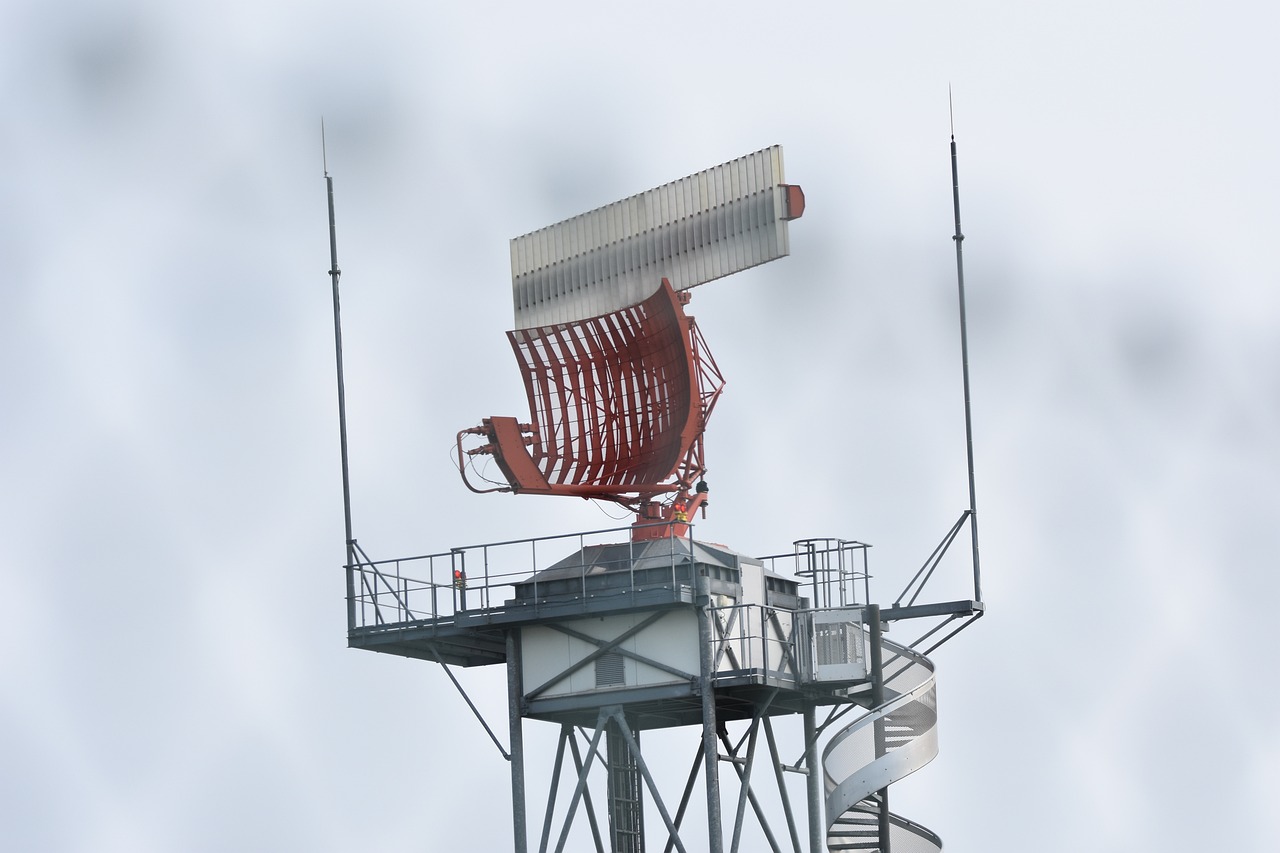
Potential Applications in Military Operations
The advent of quantum radar technology is not just a leap forward; it's a *quantum leap* that could redefine military operations as we know them. Imagine a battlefield where traditional detection methods are rendered obsolete, and commanders can see through the fog of war with unparalleled clarity. Quantum radars bring a plethora of applications to the table, each one enhancing the effectiveness of military strategies and operations.
One of the most significant applications of quantum radars lies in their ability to revolutionize reconnaissance missions. In a world where information is power, having the upper hand in intelligence gathering is crucial. Quantum radars can detect enemy movements, even those of stealthy aircraft and drones, with precision that conventional radar systems simply cannot match. This capability allows military forces to gather real-time data on enemy positions and activities, enabling proactive decision-making.
Furthermore, quantum radars can significantly enhance surveillance operations. Consider a scenario where a military unit is deployed in a hostile environment. The ability to monitor an area for potential threats without being detected is invaluable. Quantum radars can operate effectively in environments filled with electronic countermeasures, providing a reliable means of surveillance that keeps troops safe and informed. This capability is especially crucial in urban warfare, where the risk of ambushes is high.
In addition to reconnaissance and surveillance, quantum radars play a vital role in targeting operations. Imagine a precision strike where the target is identified with pinpoint accuracy, minimizing collateral damage and increasing mission success rates. Quantum radars can provide detailed information about enemy assets, including their size, speed, and even their operational status. This level of detail allows military planners to craft strategies that are not only effective but also ethically sound.
Moreover, the integration of quantum radars into existing military frameworks can enhance communication systems. In the chaos of battle, maintaining clear and secure communication channels is paramount. Quantum radars can facilitate encrypted communication, ensuring that critical information remains confidential and secure from enemy interception. This aspect of quantum radar technology could greatly improve coordination among allied forces, leading to more effective joint operations.
To illustrate the potential applications of quantum radars in military operations, consider the following table:
| Application | Description | Impact |
|---|---|---|
| Reconnaissance | Real-time data collection on enemy movements. | Enhanced situational awareness and proactive strategies. |
| Surveillance | Monitoring hostile environments without detection. | Increased troop safety and effective threat identification. |
| Targeting | Precise identification of enemy assets. | Higher success rates and reduced collateral damage. |
| Communication | Secure and encrypted communication channels. | Improved coordination among allied forces. |
In conclusion, the potential applications of quantum radars in military operations are vast and varied. From enhancing reconnaissance and surveillance to improving targeting and communication, these systems promise to transform the landscape of modern warfare. As we continue to explore the capabilities of quantum technologies, one thing is clear: the future of military operations is bright, and quantum radars are at the forefront of this evolution.
- What is quantum radar technology?
Quantum radar technology utilizes the principles of quantum mechanics to improve detection capabilities, especially against low-observable targets. - How does quantum radar differ from traditional radar?
Quantum radar can detect stealth objects and operate effectively in jamming environments, providing a significant advantage over conventional radar systems. - What are the main applications of quantum radars in military operations?
Quantum radars can enhance reconnaissance, surveillance, targeting, and secure communication in military settings. - Are there any challenges in implementing quantum radar technology?
Yes, challenges include technical limitations and high development costs that need to be addressed for widespread adoption.

Challenges in Implementing Quantum Radars
As exciting as the prospect of quantum radars may be, the journey towards their implementation is not without its hurdles. Several challenges need to be navigated before we can fully harness the potential of this groundbreaking technology. First and foremost, we must address the technical limitations that currently exist. Quantum radar technology relies on the principles of quantum mechanics, which can be notoriously difficult to manipulate and control. Researchers are still grappling with the complexities of creating systems that can effectively utilize quantum entanglement and superposition in a practical, real-world setting.
Moreover, the development of quantum radars is not just a matter of refining existing technology; it requires a complete rethinking of radar systems as we know them. For instance, the sensitivity required to detect the faint signals generated by quantum particles poses significant engineering challenges. As these radars are designed to detect stealth objects, the precision needed in their construction and operation is paramount. This leads us to the next significant hurdle: cost and resource considerations.
Implementing quantum radar technology comes with a hefty price tag. The research and development phase alone demands substantial financial investment. Military organizations have to weigh the costs of adopting these advanced systems against the potential benefits they may bring. This raises a crucial question: is the investment in quantum radars justifiable when traditional radar systems are still effective? The answer may vary depending on the specific military objectives and the evolving nature of warfare.
Furthermore, the allocation of resources for quantum radar development can be a contentious issue. Military budgets are often stretched thin, and prioritizing funds for experimental technologies over more established systems can lead to internal debates. As a result, the path to widespread adoption of quantum radars is fraught with financial uncertainty.
In addition to technical and financial challenges, there are also operational barriers to consider. The integration of quantum radars into existing military frameworks requires extensive training and adaptation. Personnel must be educated not just on how to operate these new systems, but also on how to interpret the data they produce. This could mean significant changes in tactics and strategies, which can take time to implement across various military branches.
Ultimately, while the potential of quantum radars is immense, the road to their implementation is paved with challenges that must be carefully navigated. Addressing these issues will be crucial for military organizations looking to maintain a competitive edge in future warfare. As the technology evolves, so too must our strategies and approaches to integrating it into the battlefield.
- What are quantum radars? Quantum radars are advanced radar systems that leverage the principles of quantum mechanics to improve detection capabilities, particularly for stealth objects.
- What are the main challenges in implementing quantum radars? The main challenges include technical limitations, high costs, resource allocation issues, and operational barriers related to training and integration.
- How do quantum radars differ from traditional radars? Unlike traditional radars, quantum radars can detect low-observable targets more effectively and are more resistant to jamming, making them potentially more reliable in combat situations.
- Will quantum radars change the dynamics of warfare? Yes, quantum radars have the potential to significantly alter military strategies and enhance the effectiveness of reconnaissance and surveillance operations.
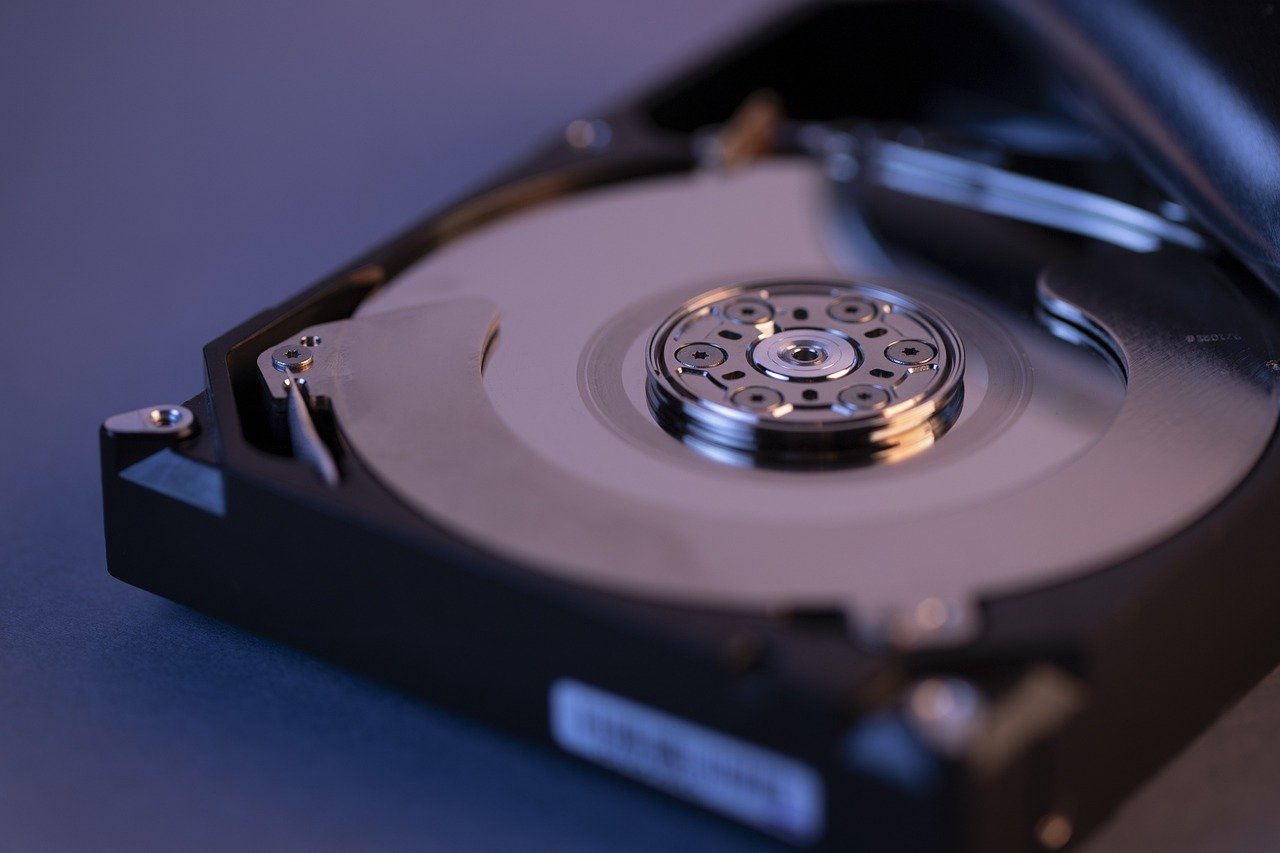
Technical Limitations
When we talk about quantum radar technology, it’s easy to get caught up in the excitement of its potential. However, let’s not forget that this technology is still in its infancy and faces several that need to be addressed before it can be fully operational on the battlefield. One of the major hurdles is the complexity of quantum systems. Quantum radars rely on the principles of quantum mechanics, which are inherently challenging to harness. The manipulation of quantum states requires advanced understanding and precision, making the development of practical systems a daunting task.
Another significant barrier is the environmental sensitivity of quantum systems. Quantum radars are susceptible to noise and interference from their surroundings. This means that deploying them in real-world scenarios, especially in chaotic battlefield environments, can lead to unreliable performance. For instance, the photons used in quantum radar systems can easily lose their quantum state due to interactions with other particles, rendering the system less effective.
Moreover, there’s the issue of scalability. While small-scale prototypes have shown promise, scaling these systems for widespread military use presents logistical challenges. The current quantum radar prototypes are often bulky and require complex setups, which can hinder their deployment in fast-moving military operations. As a result, researchers are working tirelessly to find ways to miniaturize these systems while maintaining their effectiveness.
Additionally, the integration with existing military technology poses another challenge. The military relies on a variety of radar systems that have been perfected over decades. Introducing quantum radars into this mix requires not only technical adjustments but also a shift in operational protocols. This transition can be slow and cumbersome, as military organizations often resist change, preferring to stick with tried-and-true technologies.
In summary, while quantum radars hold immense potential, their cannot be overlooked. Addressing these challenges will require significant investment in research and development, as well as a willingness to experiment and adapt. As the technology evolves, we may see breakthroughs that could finally unlock the full capabilities of quantum radars, but for now, the road ahead is filled with obstacles.
- What are quantum radars? Quantum radars are advanced radar systems that leverage the principles of quantum mechanics to enhance detection capabilities, particularly against stealth technologies.
- Why are quantum radars considered superior to traditional radars? They offer improved detection of low-observable targets and greater resilience against jamming, making them potentially more effective in modern warfare.
- What are the main challenges in developing quantum radars? The primary challenges include technical complexity, environmental sensitivity, scalability issues, and integration with existing military technologies.
- How might quantum radars change military strategies? By providing enhanced detection and resilience, quantum radars could shift the balance of power in military operations, enabling more effective reconnaissance and targeting.
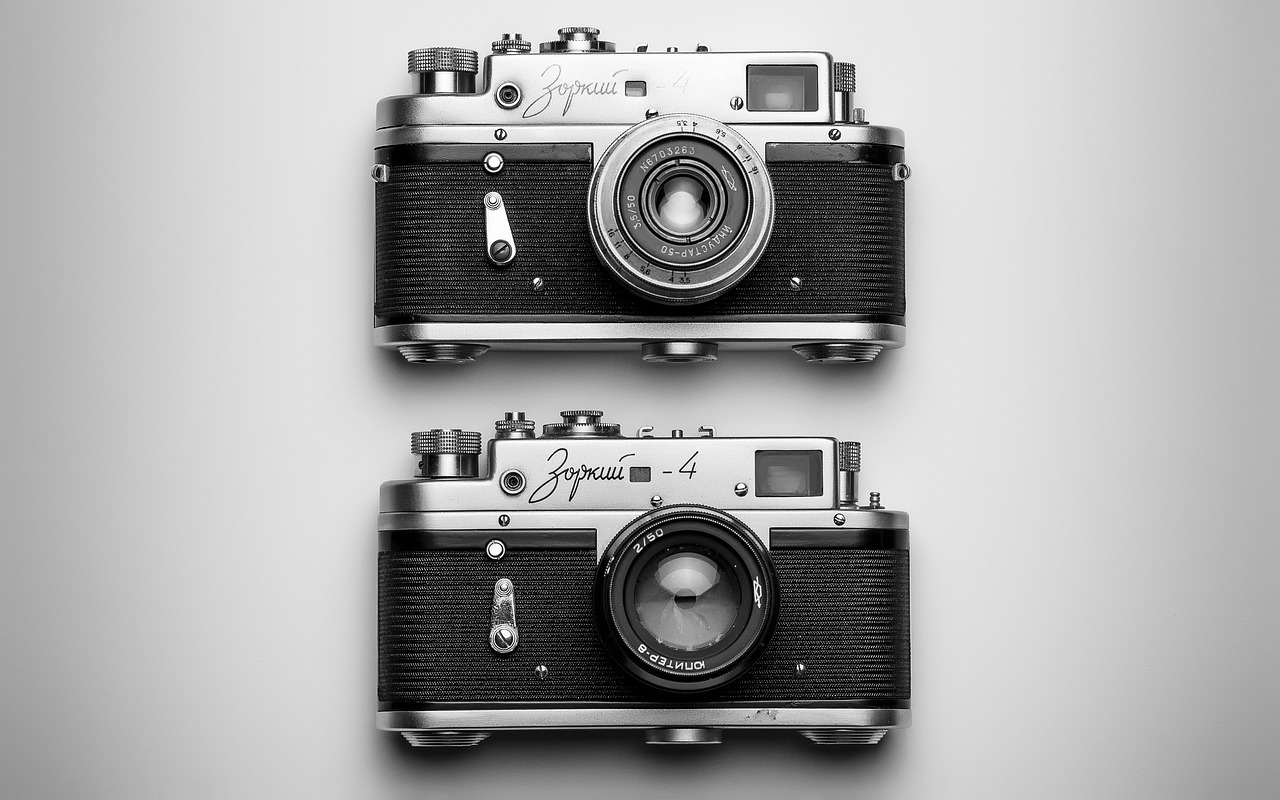
Cost and Resource Considerations
When it comes to implementing quantum radar technology, one of the most significant hurdles is the cost associated with its development and deployment. The financial implications can be daunting, especially for military organizations that must balance their budgets against various pressing needs. Developing quantum radars involves cutting-edge research, advanced materials, and sophisticated engineering, all of which contribute to high initial investment costs. It's not just about the technology itself; it's also about the extensive infrastructure required to support it.
Moreover, the resources required to train personnel who can operate and maintain these advanced systems are substantial. This includes not only financial resources but also time and effort to ensure that military staff are adequately prepared to handle the complexities of quantum radar technology. As with any new military technology, there is a learning curve that can temporarily hinder operational efficiency.
In addition to direct costs, there are also opportunity costs to consider. Investing heavily in quantum radar may divert funds from other crucial areas, such as personnel training, conventional weapons systems, or cybersecurity measures. This raises an important question: is the investment in quantum radar worth the potential benefits it brings? Many military strategists argue that the advantages of enhanced detection capabilities and resilience against jamming make it a worthwhile pursuit, but the debate continues.
To illustrate the cost considerations more clearly, let's look at a simplified
| Aspect | Traditional Radar Systems | Quantum Radar Systems |
|---|---|---|
| Development Cost | Moderate | High |
| Operational Cost | Low | Moderate |
| Personnel Training | Standard | Extensive |
| Capability | Limited | Enhanced |
This table highlights that while traditional radar systems may be less expensive to develop and operate, they lack the advanced capabilities that quantum radars promise. As military forces weigh these factors, they must also consider the long-term strategic advantages that quantum radars could offer. In an era where stealth technology and electronic warfare tactics are becoming increasingly sophisticated, the investment in quantum radar could very well be a game-changer.
Ultimately, the successful implementation of quantum radars will depend on a careful evaluation of these . Military planners must not only assess the immediate financial impact but also the potential for future operational advantages. As the battlefield evolves, so too must the technologies that support it. The question remains: can military organizations justify the costs of quantum radar technology in the face of emerging threats?
- What are quantum radars? Quantum radars are advanced radar systems that leverage the principles of quantum mechanics to improve detection capabilities and resist jamming.
- Why are quantum radars so expensive? The high costs are due to the cutting-edge technology, research, and infrastructure required for their development and deployment.
- How do quantum radars compare to traditional radar systems? Quantum radars offer enhanced detection capabilities, especially against stealth targets, but come with higher development and operational costs.
- What are the potential applications of quantum radars in military operations? They can enhance reconnaissance, surveillance, and targeting, significantly shaping military strategies.
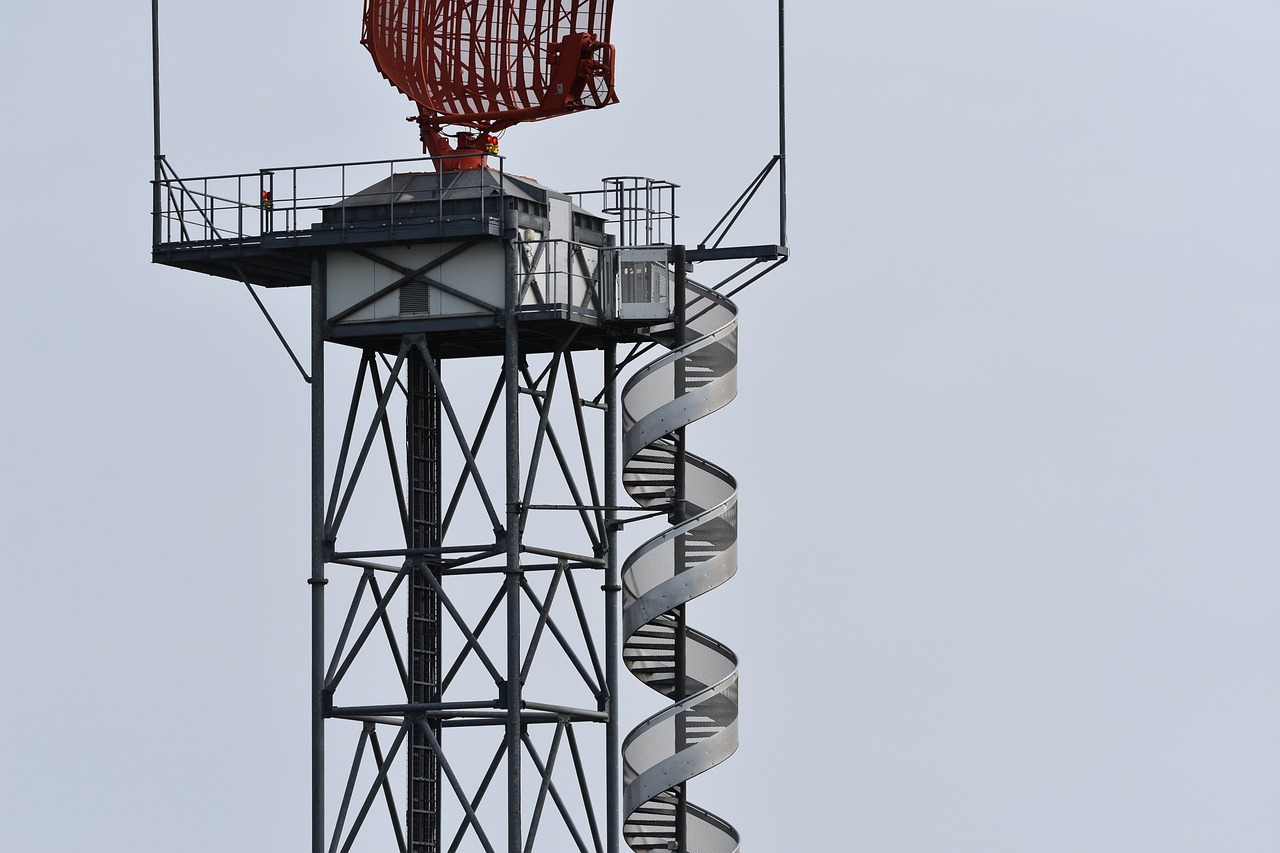
The Future of Quantum Radars in Warfare
As we gaze into the crystal ball of military technology, one thing becomes abundantly clear: quantum radars are not just a passing trend; they are set to redefine the landscape of warfare. Imagine a battlefield where stealth is no longer a guarantee of safety, where even the most advanced aircraft can be detected with unprecedented precision. This is the promise that quantum radar technology brings to the table. By harnessing the principles of quantum mechanics, these radars are poised to create a seismic shift in how military operations are conducted.
So, what does the future hold for quantum radars? One of the most exciting prospects is their potential to enhance situational awareness across various combat scenarios. With the ability to detect low-observable targets, military forces can gain a significant tactical advantage. Picture a scenario where enemy drones, traditionally difficult to spot, are tracked in real-time, allowing for swift and decisive action. This capability could change the dynamics of aerial combat, making it a game of strategy and precision rather than mere stealth.
Moreover, the integration of quantum radars into existing military frameworks could lead to a more cohesive and efficient command structure. By providing real-time data and insights, commanders can make informed decisions faster than ever before. This could mean the difference between victory and defeat in high-stakes situations. The potential applications are vast, extending beyond air combat to naval engagements, ground operations, and even cyber warfare.
However, as with any revolutionary technology, the road ahead is not without its challenges. The implementation of quantum radars will necessitate a complete overhaul of current systems and protocols. Military organizations will need to invest heavily in training personnel to operate these advanced systems effectively. Additionally, the integration of quantum radars with existing technologies must be seamless to avoid operational disruptions. This could lead to a period of adjustment, where traditional methods are slowly phased out in favor of quantum solutions.
As we contemplate the long-term implications of quantum radar technology, it's also essential to consider the international security dynamics it will influence. Nations that adopt and master this technology first will likely gain a significant edge over their adversaries. This could lead to a new arms race, where countries scramble to develop their quantum capabilities, potentially destabilizing existing power structures. The balance of power in military engagements could shift dramatically, emphasizing the need for diplomatic strategies to manage these changes.
In conclusion, the future of quantum radars in warfare is both exciting and daunting. While they hold the potential to revolutionize military operations and enhance detection capabilities, the challenges of implementation and the implications for global security cannot be overlooked. As we move forward, it will be crucial for military leaders, policymakers, and scientists to collaborate closely, ensuring that the benefits of quantum radar technology are realized while mitigating the associated risks.
- What are quantum radars? Quantum radars are advanced radar systems that utilize the principles of quantum mechanics to enhance detection capabilities, particularly for stealth targets.
- How do quantum radars differ from traditional radars? Unlike traditional radars, which rely on electromagnetic waves, quantum radars exploit quantum entanglement and superposition, allowing them to detect objects that are otherwise difficult to spot.
- What are the main advantages of quantum radars in warfare? Quantum radars offer improved detection of stealth objects, resilience against jamming, and enhanced situational awareness, transforming military strategies.
- What challenges do quantum radars face in implementation? Technical limitations, high costs, and the need for comprehensive training and integration with existing systems are significant hurdles for the adoption of quantum radars.
Frequently Asked Questions
- What is quantum radar technology?
Quantum radar technology leverages the principles of quantum mechanics to enhance radar systems. Unlike traditional radars that rely on classical physics, quantum radars utilize quantum entanglement and superposition, allowing for improved detection capabilities and resilience against interference.
- How do quantum radars improve detection of stealth objects?
Quantum radars can detect low-observable targets, such as stealth aircraft, by using quantum signals that are less susceptible to being masked by conventional stealth technology. This means they can pick up on subtle signatures that traditional radar systems might miss, giving military forces a significant strategic advantage.
- Are quantum radars resistant to jamming?
Yes, one of the standout features of quantum radars is their resilience against jamming. They can maintain operational integrity even in environments where jamming is deployed, ensuring that communication and surveillance remain reliable during critical military operations.
- What are some potential applications of quantum radars in military operations?
Quantum radars have a wide range of applications in military operations, including enhanced reconnaissance, improved surveillance capabilities, and precise targeting. These applications can fundamentally reshape military strategies and enhance operational effectiveness on the battlefield.
- What challenges exist in implementing quantum radar technology?
There are several challenges in implementing quantum radar technology, including technical limitations, operational hurdles, and high costs. Researchers are still working on developing practical and efficient systems that can be deployed effectively in real-world scenarios.
- How much does it cost to develop quantum radar technology?
The development of quantum radar technology can be prohibitively expensive due to the advanced research and resources required. Military investment in this technology necessitates careful financial planning and resource allocation to overcome these barriers and realize its potential benefits.
- What does the future hold for quantum radars in warfare?
The future of quantum radars in warfare looks promising, with expectations of continued advancements in technology that could further enhance military strategies. As research progresses, we may see a significant shift in international security dynamics and military operations due to the capabilities offered by quantum radar systems.


